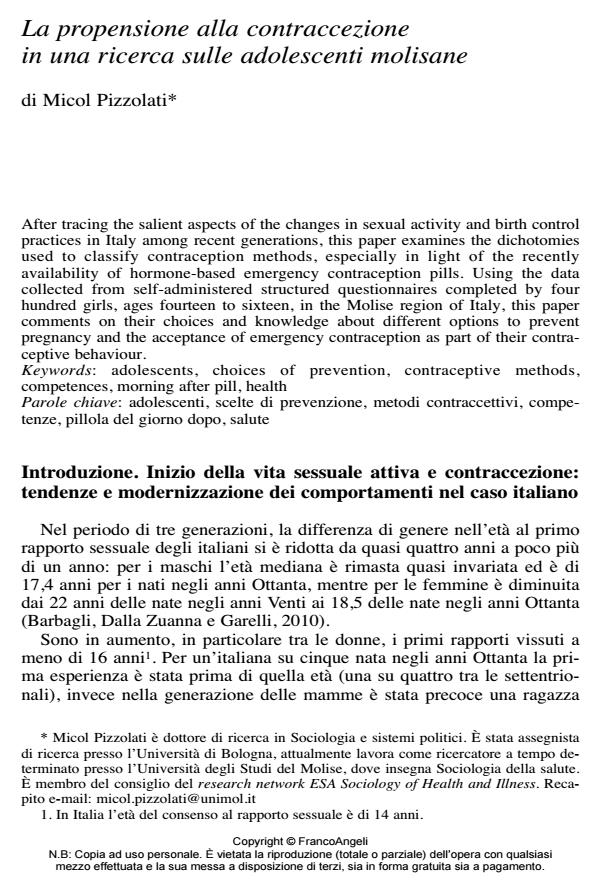La propensione alla contraccezione in una ricerca sulle adolescenti molisane
Titolo Rivista SALUTE E SOCIETÀ
Autori/Curatori Micol Pizzolati
Anno di pubblicazione 2013 Fascicolo 2013/2
Lingua Italiano Numero pagine 14 P. 130-143 Dimensione file 108 KB
DOI 10.3280/SES2013-002008
Il DOI è il codice a barre della proprietà intellettuale: per saperne di più
clicca qui
Qui sotto puoi vedere in anteprima la prima pagina di questo articolo.
Se questo articolo ti interessa, lo puoi acquistare (e scaricare in formato pdf) seguendo le facili indicazioni per acquistare il download credit. Acquista Download Credits per scaricare questo Articolo in formato PDF

FrancoAngeli è membro della Publishers International Linking Association, Inc (PILA)associazione indipendente e non profit per facilitare (attraverso i servizi tecnologici implementati da CrossRef.org) l’accesso degli studiosi ai contenuti digitali nelle pubblicazioni professionali e scientifiche
After tracing the salient aspects of the changes in sexual activity and birth control practices in Italy among recent generations, this paper examines the dichotomies used to classify contraception methods, especially in light of the recently availability of hormone-based emergency contraception pills. Using the data collected from self-administered structured questionnaires completed by four hundred girls, ages fourteen to sixteen, in the Molise region of Italy, this paper comments on their choices and knowledge about different options to prevent pregnancy and the acceptance of emergency contraception as part of their contraceptive behaviour.
Parole chiave:Adolescenti, scelte di prevenzione, metodi contraccettivi, competenze, pillola del giorno dopo, salute
Micol Pizzolati, La propensione alla contraccezione in una ricerca sulle adolescenti molisane in "SALUTE E SOCIETÀ" 2/2013, pp 130-143, DOI: 10.3280/SES2013-002008